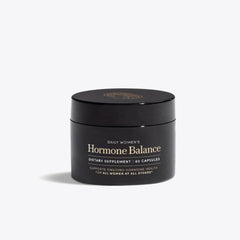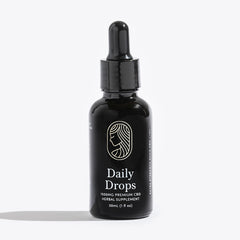 Chronic headaches can not only be a source of pain, but also major frustration if you are trying to determine your personal headache triggers. Headaches can range from nagging to debilitating, and sometimes simply sorting out their causes can take some real detective work. Most people have already been told to keep a headache diary (if you have not, you should!), but there are other things that can cause or contribute to headaches that you may also want to consider.
Chronic headaches can not only be a source of pain, but also major frustration if you are trying to determine your personal headache triggers. Headaches can range from nagging to debilitating, and sometimes simply sorting out their causes can take some real detective work. Most people have already been told to keep a headache diary (if you have not, you should!), but there are other things that can cause or contribute to headaches that you may also want to consider.
Have you talked to your dentist?
 Your teeth are in your head, but people still commonly miss tooth pain that presents as headache. And because dental visits are very often separate from the rest of medical care, your doctor may not even think to refer you to a dentist to look for problems in your mouth that could be the cause of head pain. That said, the cranial nerves that innervate your teeth can radiate pain to other parts of the head and face, even if your tooth or teeth don’t actually hurt themselves – nearly every kind of headache you can list has been reported in a medical journal as being caused by a dental problem! <1> Likewise, problems with the joint that you commonly think of as your jaw – the temporomandibular joint (or TMJ) – is also a relatively common cause of headache. The muscle that opens this joint (temporalis) actually covers the side of your head – a common location for some kinds of headaches. TMJ problems ranging from injury to arthritis can cause pain that feels similar to many types of headache, even if you are not aware of your jaw hurting. <2> The bottom line is, if you suffer from headaches and have not seen a dentist in a while, it’s definitely a good idea to make an appointment, and be sure to mention the headaches you’ve been experiencing to your dentist so they can look for the right things.
Your teeth are in your head, but people still commonly miss tooth pain that presents as headache. And because dental visits are very often separate from the rest of medical care, your doctor may not even think to refer you to a dentist to look for problems in your mouth that could be the cause of head pain. That said, the cranial nerves that innervate your teeth can radiate pain to other parts of the head and face, even if your tooth or teeth don’t actually hurt themselves – nearly every kind of headache you can list has been reported in a medical journal as being caused by a dental problem! <1> Likewise, problems with the joint that you commonly think of as your jaw – the temporomandibular joint (or TMJ) – is also a relatively common cause of headache. The muscle that opens this joint (temporalis) actually covers the side of your head – a common location for some kinds of headaches. TMJ problems ranging from injury to arthritis can cause pain that feels similar to many types of headache, even if you are not aware of your jaw hurting. <2> The bottom line is, if you suffer from headaches and have not seen a dentist in a while, it’s definitely a good idea to make an appointment, and be sure to mention the headaches you’ve been experiencing to your dentist so they can look for the right things.
Look into your eyes…or visit an eye doctor
In addition to your teeth and jaw, it’s a good idea to consider your eyes when it comes to headaches. Eye strain, especially from things like heavy computer use, can both be a standalone cause of headaches or a trigger for migraines or tension headaches. In studies of people who deal with headaches, patients commonly report ocular symptoms including light sensitivity and blurred vision. Likewise, individuals with headache often report feeling that exposure to bright light, eye strain and heavy visual use (long hours on a screen, watching a monitor, reading, etc) as triggers for a headache. As visual changes can occur gradually over time, you may not notice them as readily as you might think. So if you have never had an eye exam or it’s been a while, it’s a good idea to go and get your eyes checked out – it may even help your headaches.
Check on your posture
 While the evidence is perhaps not as strong as for eyestrain, posture may be a contributing factor in some kinds of headache. This seems to be most true for what are sometimes called cervical (referring to the neck) or occipital (referring to the back of the head) tension headaches. <4> If you suffer from this kind of headache, it may not be a bad idea to have your posture evaluated by your doctor, a physical therapist, certified personal trainer, or chiropractor. The number one thing that these professionals may be looking for is what is called forward head posture. Forward head posture is something that can occur when the head is held too far forward of its natural position centered over the top of the spine. Many people experience forward head posture when they are reading, or if they are seated looking at a computer with a monitor that is too low and causes them to gaze down. If you do these things commonly, then your body may become accustomed to the posture, which can contribute to headaches and neck pain. Usually, exercises and postural training are used to correct this physical pattern. <5>
While the evidence is perhaps not as strong as for eyestrain, posture may be a contributing factor in some kinds of headache. This seems to be most true for what are sometimes called cervical (referring to the neck) or occipital (referring to the back of the head) tension headaches. <4> If you suffer from this kind of headache, it may not be a bad idea to have your posture evaluated by your doctor, a physical therapist, certified personal trainer, or chiropractor. The number one thing that these professionals may be looking for is what is called forward head posture. Forward head posture is something that can occur when the head is held too far forward of its natural position centered over the top of the spine. Many people experience forward head posture when they are reading, or if they are seated looking at a computer with a monitor that is too low and causes them to gaze down. If you do these things commonly, then your body may become accustomed to the posture, which can contribute to headaches and neck pain. Usually, exercises and postural training are used to correct this physical pattern. <5>
Think about what you are drinking
Both what you drink and what you don’t drink can contribute to headaches. It’s probably not news to most people that too much alcohol can cause a headache (hello, hangovers?) – and it might be especially important for those who suffer from migraine to be careful with alcohol intake. In a large survey, over 35% of respondents listed alcohol as a migraine trigger <6>, and red wine was called out by almost 80% of respondents as the most common alcohol trigger. Scientists are not entirely sure what accounts for this, but some data suggests that red wine can trigger the release of the neurotransmitter serotonin from platelets <7>, which in turn acts on receptors that induce headaches.
 The relationship between caffeine and headache is best summarized as… complicated. There is evidence that caffeine consumption contributes to the development of chronic daily headache <8>, but at the same time, those who regularly consume caffeine (even at low levels) may find they suffer from new onset headaches if they stop consuming caffeine. <9> While this phenomenon is typically transient, it is good to be aware of if you are looking to reduce or eliminate caffeine. There is also evidence that caffeine can contribute the relief of headache pain, especially with migraine pain, which is why you may find caffeine as an ingredient in medication intended to treat migraine. If you are trying to understand the relationship between your caffeine intake and headache, this is another plug for keeping a headache diary, which includes the monitoring of caffeine intake.
The relationship between caffeine and headache is best summarized as… complicated. There is evidence that caffeine consumption contributes to the development of chronic daily headache <8>, but at the same time, those who regularly consume caffeine (even at low levels) may find they suffer from new onset headaches if they stop consuming caffeine. <9> While this phenomenon is typically transient, it is good to be aware of if you are looking to reduce or eliminate caffeine. There is also evidence that caffeine can contribute the relief of headache pain, especially with migraine pain, which is why you may find caffeine as an ingredient in medication intended to treat migraine. If you are trying to understand the relationship between your caffeine intake and headache, this is another plug for keeping a headache diary, which includes the monitoring of caffeine intake.
Finally, drinking more water might be the most simple, safe and effective thing you can try at home if you struggle with headaches. At least one randomized controlled study found almost a 50% improvement in headache pain when individuals with moderate chronic headache were instructed to increase water intake. <10>
Could your hormones be part of the problem?
If your headaches are not obviously cyclic, you may not easily relate them to your hormones. While there are headaches (such as those that occur prior to menstruation) that are associated with the cyclic ebb and flow of estrogen and progesterone, headaches can also be triggered by other hormone changes such as declining estrogen levels in peri-menopause and menopause, and testing can be very helpful in sorting this out. You can talk to your doctor, or use a home test like those from Let’s Get Checked or ZRT Labs to determine if hormones may be a cause in your headache.
Headache pain can be challenging, but with a little investigation and experimentation, you can often get to the root of the problem and find better solutions for relief. If you are finding it challenging to make change and develop new routines, a good place to start is by scheduling your first complimentary wellness coaching session with one of our Certified Wellness Coaches who can help to guide you on the path to better health.
References:
<1> Alonso AA, Nixdorf DR. Case Series of Four Different Headache Types Presenting as Tooth Pain. J Endod. 2006;32(11):1110-1113. doi:10.1016/j.joen.2006.02.033
<2> Bender SD. Orofacial Pain and Headache: A Review and Look at the Commonalities. Curr Pain Headache Rep. 2014;18(3):400. doi:10.1007/s11916-013-0400-5
<3> Vincent AJP, Spierings ELH, Messinger HB. A Controlled Study of Visual Symptoms and Eye Strain Factors in Chronic Headache. Headache J Head Face Pain. 1989;29(8):523-527. doi:10.1111/j.1526-4610.1989.hed2908523.x
<4> Mahmoud NF, Hassan KA, Abdelmajeed SF, Moustafa IM, Silva AG. The Relationship Between Forward Head Posture and Neck Pain: a Systematic Review and Meta-Analysis. Curr Rev Musculoskelet Med. 2019;12(4):562-577. doi:10.1007/s12178-019-09594-y
<5> McDonnell MK, Sahrmann SA, Van Dillen L. A Specific Exercise Program and Modification of Postural Alignment for Treatment of Cervicogenic Headache: A Case Report. J Orthop Sports Phys Ther. 2005;35(1):3-15. doi:10.2519/jospt.2005.35.1.3
<6> Onderwater GLJ, van Oosterhout WPJ, Schoonman GG, Ferrari MD, Terwindt GM. Alcoholic beverages as trigger factor and the effect on alcohol consumption behavior in patients with migraine. Eur J Neurol. 2019;26(4):588-595. doi:10.1111/ene.13861
<7> Peatfield RC, Fletcher G, Rhodes K, Gardiner IM, de Belleroche J. Pharmacological analysis of red-wine-induced migrainous headaches. J Headache Pain. 2003;4(1):18-23. doi:10.1007/s101940300023
<8> Scher AI, Stewart WF, Lipton RB. Caffeine as a risk factor for chronic daily headache: A population-based study. Neurology. 2004;63(11):2022-2027. doi:10.1212/01.WNL.0000145760.37852.ED
<9> Rubin GJ, Smith AP. Caffeine Withdrawal and Headaches. Nutr Neurosci. 1999;2(2):123-126. doi:10.1080/1028415X.1999.11747270
<10> Spigt M, Weerkamp N, Troost J, van Schayck CP, Knottnerus JA. A randomized trial on the effects of regular water intake in patients with recurrent headaches. Fam Pract. 2012;29(4):370-375. doi:10.1093/fampra/cmr112




